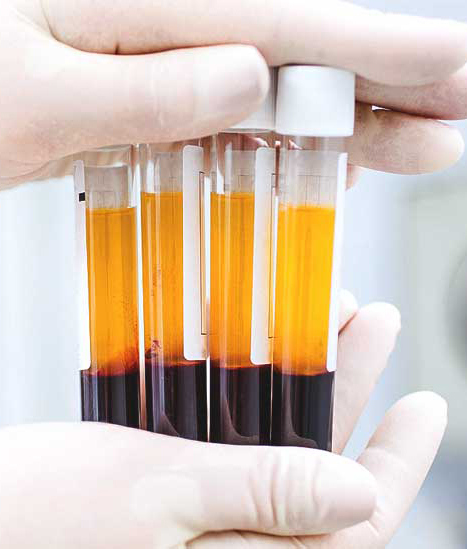What conditions can be treated with PRP?
Many orthopaedic problems can be treated with PRP including: Rotator cuff tendonitis, partial rotator cuff tears, biceps tendonitis, shoulder bursitis, medial, and lateral epicondylitis (golfers & tennis elbow), elbow ligament sprains or tears, wrist and hand tendonitis, wrist and hand ligament sprains or tears, hip bursitis, hamstring tendonitis or tears, quadriceps tendonitis, patellar tendonitis, ligament sprains or tears in the knee, knee bursitis, shin splints, Achilles tendon tears, plantar fascitis, ankle and foot tendonitis, and ankle and foot ligament sprains or tears.
What is the treatment process?
Following a formal evaluation and diagnostic workup, an individualized treatment plan will be discussed with you. The first step involves drawing a small amount (30cc) of blood from your arm. The blood is placed in special tubes, placed into a centrifuge, and spun down to separate the platelets and white blood cells from the serum and red blood cells. The platelets and white blood cells are collected into a sterile syringe. The skin is sterilely prepped, the area is anesthetized with local anesthetic, and the PRP is injected into the damaged tissue that has been targeted for treatment.
What is the treatment duration?
Depending on the severity and duration of your injury, one to three PRP injections are suggested. Following the initial treatment with PRP, a follow up visit occurs 2-4 weeks later. At this visit an evaluation of your response to the initial therapy is performed and a decision is made regarding the need for additional PRP treatments. In general, chronic injuries require more than one injection. In both acute and chronic injuries, injections may be combined with an exercise or physical therapy program to enhance the success of the treatment.

